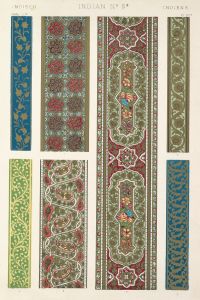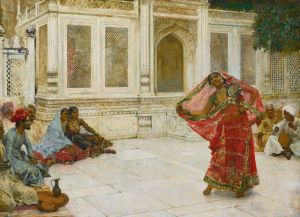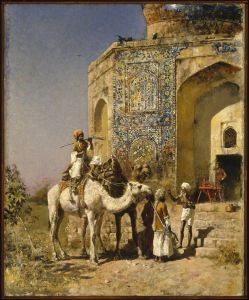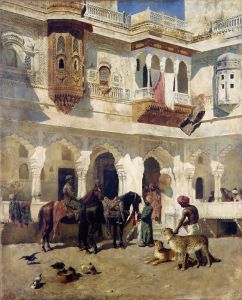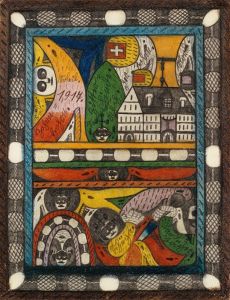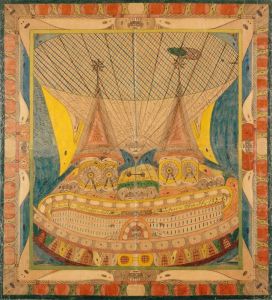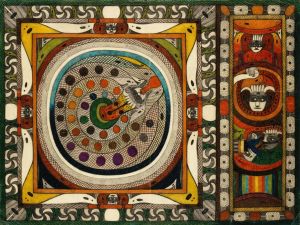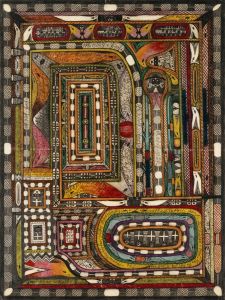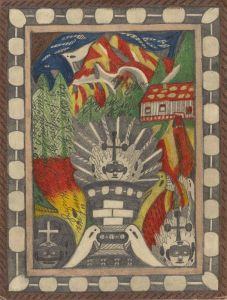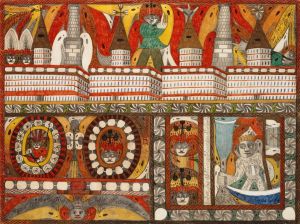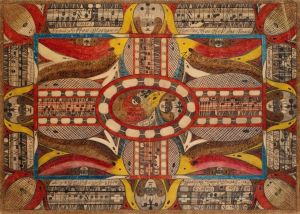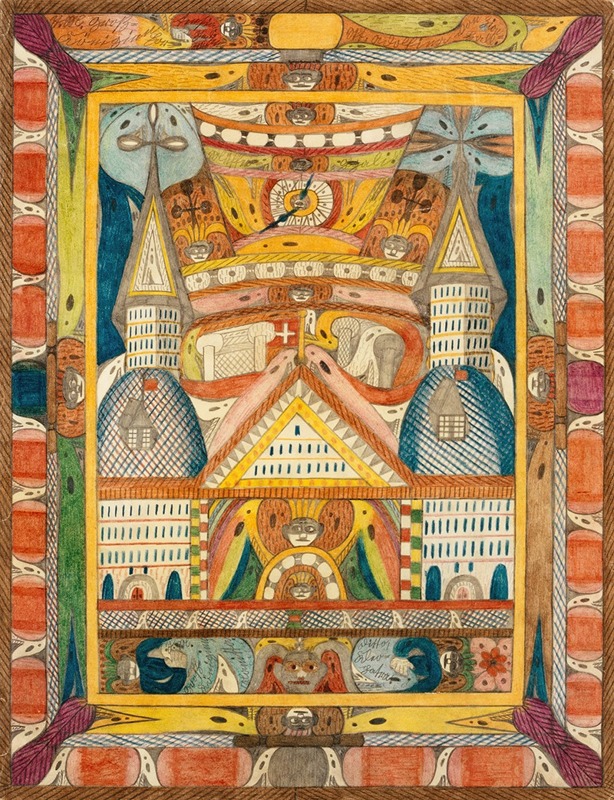
Leantika,=Riesen=Grand=Hottell, in Lion=See; Indien
A hand-painted replica of Adolf Wölfli’s masterpiece Leantika,=Riesen=Grand=Hottell, in Lion=See; Indien, meticulously crafted by professional artists to capture the true essence of the original. Each piece is created with museum-quality canvas and rare mineral pigments, carefully painted by experienced artists with delicate brushstrokes and rich, layered colors to perfectly recreate the texture of the original artwork. Unlike machine-printed reproductions, this hand-painted version brings the painting to life, infused with the artist’s emotions and skill in every stroke. Whether for personal collection or home decoration, it instantly elevates the artistic atmosphere of any space.
Adolf Wölfli (1864–1930) was a Swiss artist and writer, widely regarded as one of the most significant figures in the field of Art Brut, or "outsider art." His works are characterized by intricate patterns, vivid colors, and a unique blend of text and imagery. Wölfli created his art while institutionalized at the Waldau Clinic in Bern, Switzerland, where he spent much of his adult life after being diagnosed with schizophrenia.
One of Wölfli's notable works is titled Leantika,=Riesen=Grand=Hottell, in Lion=See; Indien. This piece is part of his larger body of work, which often combined fantastical narratives with complex visual compositions. Wölfli's art frequently depicted imaginary worlds, incorporating elements of geography, architecture, and music. His creations were deeply personal, reflecting his inner thoughts and emotions, as well as his desire to construct an alternative reality.
The title of this particular work suggests a fictional grand hotel located in an imagined place called "Lion See" in India. Like many of Wölfli's pieces, it likely features a combination of densely packed drawings, musical notations, and textual elements. His works often included invented words, numbers, and symbols, creating a unique visual language that was entirely his own.
Wölfli's art was discovered and brought to public attention by Dr. Walter Morgenthaler, a psychiatrist at the Waldau Clinic. Morgenthaler published a book in 1921 titled Ein Geisteskranker als Künstler (A Psychiatric Patient as Artist), which introduced Wölfli's work to a broader audience and highlighted its artistic significance. Today, Wölfli's creations are celebrated for their originality and are considered a cornerstone of outsider art.
The Leantika,=Riesen=Grand=Hottell, in Lion=See; Indien is housed in the Adolf Wölfli Foundation at the Museum of Fine Arts in Bern, Switzerland, which holds the largest collection of his works. The foundation preserves and promotes Wölfli's legacy, ensuring that his contributions to art and culture remain accessible to future generations.
Due to the highly specific and imaginative nature of Wölfli's art, detailed interpretations of individual works, including this one, are often challenging. However, his oeuvre as a whole continues to inspire and intrigue viewers, offering a glimpse into the mind of a uniquely gifted artist.





